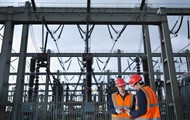Benchmarking and Lifecycle Risk Analysis of HV Cables
-
02 November 2024
-
Thomas Whyte
As Australia’s high-voltage (HV) networks expand, ensuring reliable cable performance is more important than ever. Asset owners are now focused on benchmarking and forecasting the condition of their HV cables to develop efficient, long-term maintenance and intervention plans. Effective condition monitoring from day one is key, starting with diagnostic commissioning tests that create a measurable performance baseline.
Failure Mode Analysis for Effective HV Cable Testing
The first step in any HV cable testing program is understanding potential failure modes. HV cables have multiple failure modes that can arise at different stages of their lifecycle. Table 1 below outlines common failure modes for both PILC and XLPE cables.

Table 1 – Cable type and Common Failure Modes
Identifying and classifying these failure modes ensures maintenance teams can act before minor defects evolve into major disruptions.
The three main stages where defects in the HV cable lifecycle can occur are:
- Manufacturing
- Commissioning
- Operation
A 2024 IEEE study found that workmanship defects cause 57% of HV cable failures, while manufacturing issues contribute another 16% (9% in cables, 7% in accessories). These findings highlight the importance of thorough HV cable testing during commissioning to ensure installation integrity.

Figure 1 – Ultimate cause of HV Cables Failures

Figure 2 – Age of failures over cable life cycle
Because most HV cable defects originate before or during commissioning, well-designed diagnostic testing is essential for identifying hidden weaknesses and mitigating long-term risk. Many small defects don’t cause immediate failure but accelerate insulation degradation, leading to outages years later.
Commissioning and Benchmarking in HV Cable Testing
Traditional commissioning tests provide only a pass/fail result, offering limited insight into future performance. However, benchmarking HV cable testing during commissioning delivers measurable diagnostics that support long-term condition monitoring and predictive maintenance.
According to the IEEE 400.2-2023 guidelines, these tests include installation and integration testing before cables go into service.
While withstand testing is valuable for identifying initial issues, it lacks trendable data needed for long-term condition monitoring. Benchmark testing during HV cable commissioning provides comprehensive diagnostics, allowing asset managers to establish a baseline for future condition monitoring.
EA Technology recommends a complete test suite during commissioning, including:
- VLF Withstand - IEEE 400.2-2013
- VLF Tan Delta - IEEE 400.2-2013
- VLF Partial Discharge - IEC 60270-3 / IEEE 400.3
Additional testing like Line Impedance Resonance Analysis (LIRA) can be conducted offline, while online partial discharge testing immediately after energisation provides coverage for components not tested offline, such as terminations and connections.
These comprehensive diagnostics provide early detection of partial discharge, pinpoint insulation weaknesses, and deliver trendable data for ongoing cable condition analysis. This approach enhances confidence in network reliability and supports data-driven maintenance decisions.
Forecast Network Risk: Proactive Risk Management for HV Cables
After initial benchmark testing, ongoing risk forecasting becomes vital. By capturing detailed data — such as cable type, manufacturer, test results, and environmental factors — asset managers can create predictive models of cable degradation and forecast failure probabilities.
This data-driven lifecycle risk analysis allows utilities and asset owners to:
- Prioritise maintenance based on risk profiles
- Plan replacements proactively instead of reactively
- Optimise budgets by targeting the most vulnerable assets
- Minimise downtime and enhance network reliability
By integrating repeat HV cable testing into lifecycle planning, organisations gain long-term visibility of asset performance and significantly reduce unplanned outages.
Optimising HV Cable Lifespan Through Benchmarking
To maximise cable lifespan, high-quality condition monitoring data must be gathered from the start. EA Technology’s approach combines diagnostic PD, Tan Delta, and LIRA tests to establish comprehensive performance benchmarks. These results guide future maintenance and allow accurate forecasting of cable health.
Proactive HV cable testing doesn’t just reduce failures — it provides actionable insights that extend asset life, lower operating costs, and ensure sustainable network performance.
Ready to benchmark your HV cable network? Contact EA Technology Australia today to discuss tailored HV cable testing programs for your infrastructure.
Learn more about our Cable Condition Assessment and Partial Discharge Monitoring Service for comprehensive HV asset support.
Frequently Asked Questions (FAQs)
What is HV cable testing?
HV cable testing involves diagnostic methods such as partial discharge (PD), Tan Delta, and LIRA to identify insulation defects, detect weak joints, and ensure long-term reliability.
Why is benchmarking important in HV cable testing?
Benchmarking creates a baseline of cable performance, allowing asset managers to track condition changes and schedule maintenance before failures occur.
How does the CableData® Collector enhance predictive maintenance?
The CableData® Collector captures and analyses trendable PD data, helping operators predict faults and optimise asset maintenance schedules.
What tests are included in HV cable commissioning?
Commissioning test suites typically include VLF Withstand, VLF Tan Delta, VLF Partial Discharge, and LIRA, covering the full scope of cable health assessment.
How can I learn more about HV cable testing?
For expert advice or to request an on-site assessment, contact EA Technology’s HV testing specialists today.
Learn more about EA Technology's tools for HV cable maintenance.
